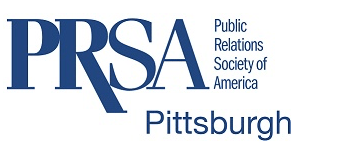Mr. Heelyagirl and TikTok experts give advice on how to build communities
By Alexis Wary
Editor’s Note: A version of this post was originally published as part of the Point Park Center for Media Innovation’s monthly email newsletter. PRSA Pittsburgh partnered with the Point Park CMI to host this event.
TikTok has become one of the leading social media platforms, allowing for companies and businesses to reach audiences and ways for average people to produce and receive unique content that can potentially lead them to fame.
“Back when the pandemic hit, and I had my wheels — the only place I know as home — TikTok was an organic way to let off some energy, make some people, smile, laugh, and have fun doing it,” said Connor Clyde aka Mr. Heelyagirl, a TikTok creator from Pittsburgh with more than 200,000 followers.
The Center for Media Innovation at Point Park and PRSA Pittsburgh worked together to host a virtual panel discussion on March 24, 2021, about the basics of TikTok and how it can be beneficial for companies and brands.
CMI Director Andrew Conte led the conversation with Clyde; Sloane Kelley, vice president of social media for 9Rooftops Marketing; and Heather Star Fielder, Point Park professor of multimedia, chair of the department of community engagement and director of Wood Street Communications.
Gen Z and Millenials are most active on TikTok, a social media platform focused on sharing short video clips with pre-recorded or original sound.
Clyde started using the app at the start of the COVID-19 pandemic, leading him to unexpected fame. Now, he even reps his own T-shirts featuring one of his catchphrases: “Crop top, muffin top, don’t stop.”
When he started making videos, Clyde said he had no expectations. He just wanted to entertain his friends and lift people up during these hard times.
Eventually, one of his videos went viral and his audience started to build from there. Since then, he’s worked on collaborations and sponsored videos with brands such as GetGo and Smile Direct Club, earning up to $1,000 each. To keep the content authentic, Clyde said he only works with sponsors that he would partner with regardless of the money.
“You have to be genuine, people can cut through …(other) people who aren’t authentic,” he said.
Apart from individuals making creative content, brands can benefit from the platform, working with creators to produce a balance of organic and sponsored content.
“You want things to feel like it is in the voice of the creator they are working with,” Kelley said.
Learning the mechanics of the app might seem intimidating, but brands shouldn’t be afraid to try it, especially if their target audience members are spending time there, she said.
For anyone who wasn’t familiar with making a video on the platform, Star Fieldler walked through the process of making and posting a TikTok video. She also explained the pros and cons of the platform, and case studies from brands such as Chipotle and Ocean Spray.
There is no formula to going viral on TikTok but, as Clyde said, by “putting out steady content, building followers and finding that secret sauce,” viewers can express themselves and build communities while also allowing brands to capture audiences’ attention.





Leave a Reply
Want to join the discussion?Feel free to contribute!